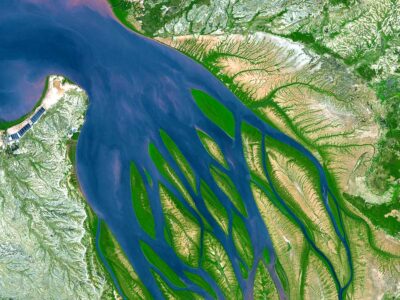As a budding environmental science major in the 1990s, the Gaia hypothesis is one of the first concepts I remember learning. It was formulated in the 1960s by James Lovelock, a scientist working in NASA’s planetary exploration program.
The hypothesis proposes:
“The idea of the Earth as a kind of living organism, something able to regulate its climate and composition so as always to be comfortable for the organisms that inhabited it . . ..”
Lovelock asked big picture questions about how and why the Earth has remained habitable for billions of years. From his scientific perspective, the fact that the planet’s temperature, atmospheric composition, and ocean salinity have remained stable over that length of time made no sense. He suspected it was all being actively maintained by life itself.
He called this living organism Gaia, after the Greek Earth goddess, and presented his research as a series of scientific papers and later in books.
In more scientific terms, the hypothesis defines Gaia as:
“. . . a complex entity involving the Earth’s biosphere, atmosphere, oceans, and soil; the totality constituting a feedback or cybernetic system which seeks an optimal physical and chemical environment for life on this planet. The maintenance of relatively constant conditions by active control may be conveniently described by the term ‘homeostasis’.”
This planet has remained suitable for life over many 100s of millions of years, and it’s not by accident or lucky positioning relative to the sun. According to this hypothesis, Gaia purposely maintains a comfortable home for all her life forms — human to microbial.
Of course, for many of us, the idea of the Earth as a living presence is intuitively obvious. For those who are raised in rural settings, I imagine it’s just always there — this understanding that the land is alive in some way. As a small-town city kid, it came to me in school. One day my 8th grade Earth Science teacher projected an image of the planet on the big screen. I immediately and stunningly knew the Earth was a she, not an it.
But what is not so obvious is the idea of the Earth as a planetary-scale controlling force. We humans like to think we’re in control of nature, yet nature has been maintaining this planet for far longer than our species has existed. She provides the conditions that allow us to be here.
So, what led Lovelock to suspect this planet wasn’t just a rock floating through space?
In part 2, I’ll summarize the climatic and chemical improbabilities of this planet remaining habitable for billions of years.
Sources:
- James Lovelock, Gaia: A New Look at Life on Earth
- James Lovelock, We Belong to Gaia


 Why Aren’t We All Wanting to Be Babaji?
Why Aren’t We All Wanting to Be Babaji?